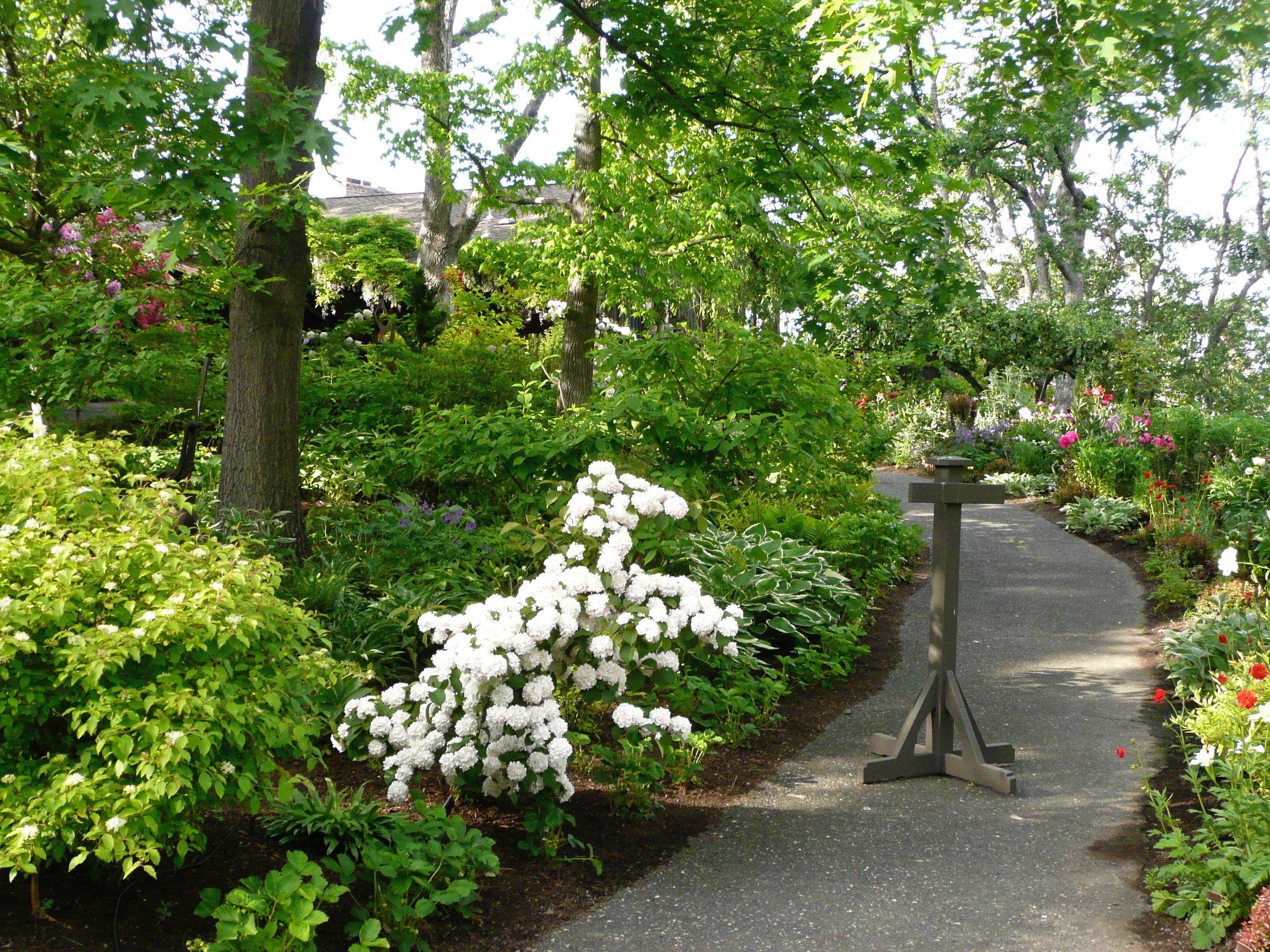Woodland & Shade Gardens
Woodland gardens offer shade and reprieve from the heat of summer. They rely on the canopy of large deciduous trees or conifers to provide shade, with sunlight peaking through at certain times of the year or day. If the tree canopy is very dense, it may have to be thinned to allow for more light during the dark winter months. Woodland and Shade Gardens evoke a peaceful and calming atmosphere. Informal trails can invite exploration.
Design Considerations
-
A rather restricted plant palette for each season usually works best, and provides a sense of visual continuity, simulating nature. Many indigenous plants are appropriate for this style of garden, supplemented by suitable non-native, or quasi-native, plants. Small trees such as Japanese Maples, Flowering Dogwoods and Magnolia, and shrubs such as Mock Orange or Redtwig Dogwood form the woodland’s understory. Ferns, Hostas, Epimediums, Native Ginger, Fernleaf Bleeding Hearts and Solomon’s Seal planted in larger sweeps and colonies shape the tapestry of the ground layer. They are best repeated throughout the garden or border to mimic nature. Shade-loving bulbs add spring color, e.g. Scilla sibirica, Chionodoxa forbesii or Leucojum aestivum. During periods of summer drought the soil can become quite dry, as ground covers and perennials compete with tree roots for moisture and nutrients. Rain, if present, does not always reach the ground. All of the above-mentioned plants, while relatively drought-tolerant, will require supplemental irrigation during the summer months and into fall. They can form thick understory growth, thus minimizing weed emergence.
-
Large, moss-covered boulders can enhance the natural appearance and add visual appeal. Bark mulch applied as a top layer around the plants retains moisture and resonates the woodland theme. A birdbath or water feature attracts birds, and the sound of trickling water adds to the ambiance, and buffers outside noise.
This small strolling garden in Hood River receives mid-day shade from mature conifers, shown in late September
Little Lime and Pinky Winky Panicle Hydrangeas furnish the shade plantings with long-lasting summer and fall color, still going strong in late September, Hood River
Established shade garden under Oak trees in The Dalles, mid-spring
Shady hillside garden facing east. The Northern Hi-Lights Azaleas on top are highly fragrant
A narrow shade border surrounds this urban, contemporary back landscape, eventually veiling the fence
This terraced hillside shade garden sparkles in the morning sun







